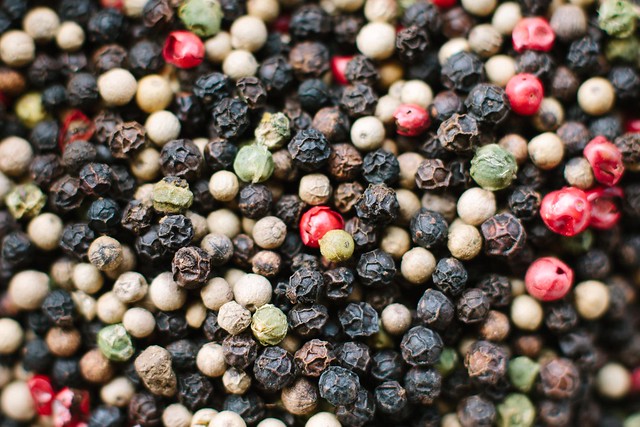When you first start eating gluten or dairy-free… or both, things definitely seem a little overwhelming (understatement of the year!). All that you used to eat seems to be now off-limits. I know, I’ve been there.
I spent the first month or so feeling as if I couldn’t eat anything, let alone enjoy it. But slowly slowly as I learnt more about this way of life, reading every gluten-free book available I’ve come to the point in which I can now whole-heartily say that I prefer eating this way. I feel so much better for it, no longer do I feel so tired, my eczema is the best it’s been my entire life, my tummy no longer feels like it’s tied in knots and my never ending daily headaches that I’ve experienced for much of my adult life no longer appear with the frequency and potency that they once did.
So if you too find yourself wanting to cut or at least limit the amount of gluten and dairy you ingest, here are my tips and suggestions to make life just that much easier.
Get to know what you can and can’t eat.
Spelt flour is often mistakenly touted as gluten-free, when in actual fact it is made from an ancient strain of wheat. Yes wheat. It contains gluten, but in much lower doses than the hybridised (aka mucked-around-with) modern wheat we are all subjected to nowadays. It’s true, that some people with mild gluten or wheat intolerance can tolerate goods made with spelt flour, but for most (like me) it is to be avoided along with all other forms of wheat (kamut, wheat berries, farro, eikorn, triticale, bulgar, freekeh etc), rye, barley and oats.
Oats themselves are in actual fact gluten-free. However, more often than not, oats are grown, harvested and processed in the same area as wheat, causing major cross-contamination issues for those who need to avoid gluten strictly. It is now sometimes possible to find certified gluten-free oats which have been grown/harvested/processed away from wheat and this is great news for some people…. However (again), many of us (me and my daughter included) can’t tolerate oats very well (my son is totally fine, even with un-certified oats). See, oats contain a protein called Avenin which although gluten-free, can have the same effect in some people as gluten. Bah, booow. I used to really, really love porridge, especially on a cold winters morning, however I’ve just had to get used to alternatives such as millet and quinoa, which really ain’t so bad after all.
Buy yourself a good rice cooker.
Super simple tip, but by far the most important tip for us wheat and gluten free’s. For years I resisted my husbands pleas to buy one, saying why do you need to buy a machine to cook rice when it is so simple to do it yourself?
They produce perfect rice every time, you can get your rice ready in advance, rinsed and with the water in, lid on all ready to simply flick the switch on 15 minutes before dinner is ready. A total blessing as a busy mother that’s for sure! I have been known to get the rice ready (in the cooker, ready to flick go) around lunchtime, if I know we are going to have a busy afternoon. It saves you so much time and hassle come 4.45pm when the kids are fading.
Get good at planning in advance and eating leftovers.
One of the easiest ways to make sure you always have food for lunch is to make extra for dinner and store in the fridge overnight. Quinoa, roast vegetables and stir-fry all work well, simply re-heat in a pan and eat as is or with more freshly cooked rice.
Find your local Indian and Asian food stores, or shop online in bulk.
Eating gluten and dairy free can be really really expensive! I don’t buy pre-mixed gluten-free flours, I prefer to buy my own flours and use them like that. I find you usually need 3 different gluten-free flours used in combination to achieve a good texture. Mostly wholegrain flours, with a touch of starch to keep things light. I used to use xanthan and guar gums on occasion, but choose not to nowadays after researching what they actually are and natural alternatives.
Indian and Asian food stores are by far the cheapest places to find gluten-free flours. There you will find various rice flours, chickpea (chana/besan) flour, pea flour, mung flour, potato starch, tapioca flour and corn flour (corn starch). But just be aware of the chance of cross contamination with bulk bins if you are coeliac or very sensitive. I recommend buying pre-packaged flours wherever possible. I go to the health food store for all my other flours; millet flour, buckwheat flour, quinoa flour, oat flour, teff flour and amaranth flour or buy organic flours online in bulk. When we lived in Australia the only ‘fine brown rice flour’ I could find came from Coles (supermarket), all the ones from health food stores were too coarse and gritty. It’s a Coles brand one and is simply labelled ‘brown rice flour’. For my New Zealand readers I recommend you check out Gluten Free Store, based in Auckland with a great online store. They have all their flours independently tested to make sure they’re 100% gluten-free, offer some of the best prices around and post anywhere in NZ. I also love Ceres brand brown rice flour, which is nice and fine and readily available through most supermarkets and health food stores.
Really everyone, if your gluten-free or not should plant themselves a little vegetable garden. Even if you just plant a few pot of fresh herbs. This will liven up your cooking and it also saves you lots of money.
Not everyone can afford to by loads of new cookbooks. It was the first thing I had to stop buying when we had kids and went from two incomes to one. The Internet is a vast source of information, but also remember to check out you local library. Many will even buy in books you suggest! Then if you really like the cookbook you can always go out a buy it once you’ve already sussed it out.
Make your own all purpose gluten-free flour, avoiding store bought pre-mixes to keep costs down.
Like I stated above, I never buy pre-made gluten-free flours. They are so overpriced and while they are a easy way to start out gluten-free, you will soon be wanting something a little cheaper and more flexible. Also, most are made up of highly refined flours and starches with little to no nutritional value. I almost always use each gluten-free flour individually, adding different flours for different recipes, but if you are wanting to make up a good all-purpose gluten-free flour try this fantastic whole grain gluten-free flour mix from Shauna @ gluten-free girl.
Be positive! Yes it’s hard work, but isn’t it worth it if you feel better?
Try to focus on the positives. Think about how good you now feel. Aren’t we lucky we can make ourselves feel better simply by eating the right foods for our bodies?
We are lucky.
Some people have to rely on drugs to feel half as good as we do simply by avoiding gluten and or dairy! We are truly blessed. Concentrate on what you can eat, don’t worry about what you can’t eat. A huge percentage of the world already eat gluten and dairy-free. Think of all the Asian and South American country’s where rice, corn and soy play such a huge roll in their diets. Look to these countries for inspiration. Think… beautiful Indian curries, flavourful Thai soups and salads, corn tortillas, beans and rice, tofu musubis and more! Be inspired, be happy!
For my explanation of all the ‘allergy-free’ terms out there, click here.


